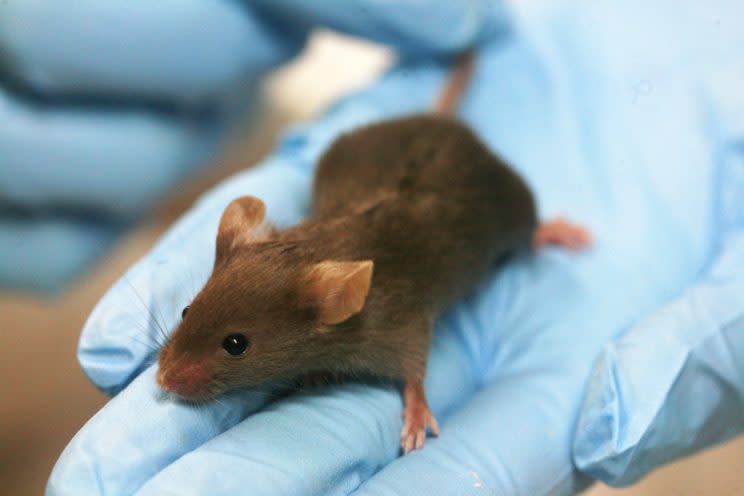Mice turn into killer rodents when lasers flip a switch in their brains

Scientists have discovered a biological switch in the brains of mice that can turn them into killer rodents.
They were able to flip the ‘kill switch’ by using a laser to target the part of the brain that controls fear.
The switch caused the mice to pursue never-seen-before prey and to bite everything in their path – even sticks and bottle caps – said the researchers.
The aim of the study was not to produce a killer army of mice, but instead to understand more about degenerative brain diseases in humans.

The researchers from Yale University used a light-based technique called optogenetics to activate neutrons in the central amygdala. This part of the brain is linked to emotion and motivation.
They found that one set of neurons prompted mice to bite moving objects while another activated the actual jaw muscles involved in biting.
“This area, the central amygdala, seems to allow the animal precise control over the muscles involved in pursuing and capturing prey,’’ said Ivan de Araujo, associate professor of psychiatry at Yale School of Medicine and senior author of the paper.
However, it was noted that the mice only appeared to attack prey that was smaller than themselves – rather than launching an attack on the researchers.
MORE: The moon is much older than we thought, Apollo 14 lunar rocks have revealed
MORE: Mysterious ‘Planet 9’ orbiting our sun could be a ‘rogue planet’ from outside the Solar System
The two sets of neurons act as a trigger for hunting behaviour once the animal has spotted signs of potential prey nearby, said the researchers.
This piece of brain circuitry is present in almost all vertebrates though appears to be absent in species that have no jaws, such as lampreys.
The research could eventually help scientists to develop treatments for degenerative brain diseases such as Alzheimer’s.

 Yahoo News
Yahoo News 

